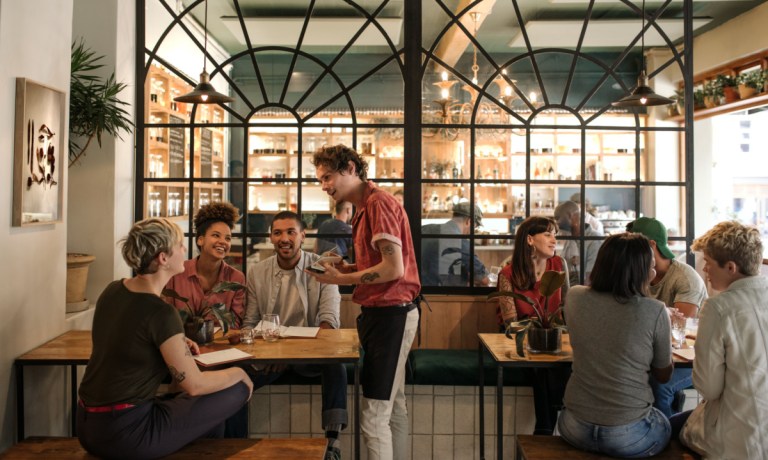Digital Transformation Prompts Small Restaurants to Streamline Holiday Menus

As the rise of digital ordering has increased the popularity of restaurant takeout, independent restaurants are rethinking their holiday season menus for off-premises optimization.
In an interview with PYMNTS, Randy Ramdass, operational manager of HAAM, a plant-based restaurant in Brooklyn, New York, spoke to how the independent eatery is applying its digital learnings from last year, when the company only offered catering and takeout, to this year’s holiday season, which will also include dine-in. Specifically, the company has tailored its menu items to be efficient and reheatable.
“[We’ve learned to] be efficient on the food items, so that will when it’s reheated, it will be quick and taste good, and all of those attributes of high-quality food will be there. … We’ve embraced [digital]. It’s made a positive impact for us, where from a productivity standpoint … it’s just simplified and streamlined everything,” Ramdass said.
Small restaurants are increasingly looking to eCommerce channels to boost their performance, as is suggested by the PYMNTS Intelligence study “Main Street Health Q3 2023: Leading Payment Processors’ Satisfy SMBs, but Less Popular Providers Are Vulnerable,” created in collaboration with Enigma.
The report, which drew from a survey of more than 500 small and medium-sized businesses (SMBs) on the main streets of the United States, revealed that roughly two-thirds of firms in the food, entertainment and accommodations sector said that they believe that it is highly important for payment processors to offer eCommerce integration.
“One of the great pieces for us is the fact that we can leverage third-party ordering systems through one system, that Toast POS, whereas in the past, you had to have each tablet for platform,” Ramdass noted. “It keeps it consistent for us to multitask and manage these channels.”
In fact, eCommerce channels are increasingly key for restaurants of all sizes’ success today, with the majority of consumers now engaging with restaurants digitally. Research from PYMNTS Intelligence’s study “Consumer Interest in an Everyday App,” created in collaboration with PayPal, which draws on insights from a survey of more than 3,300 consumers in the United States and Australia, reveals that 1 in 4 U.S. restaurant customers exclusively orders food using internet-connected devices. Plus, another 36% do so both via traditional channels (in person or calling) and via internet-connected devices.
Looking ahead, Ramdass said, automation may play an increasingly key role in how the restaurant manages busy periods with staffing challenges, such as the holiday season.
Indeed, automation is increasingly becoming the norm. Quick-service restaurants (QSRs) estimate that 51% of tasks will be automated by 2025, while full-service restaurants expected to automate 27% of tasks, according to last month’s edition of the Digital-First Banking Tracker® Series Report, “The Restaurant of the Future Is Open. Will Diners Bite?”
“We’ve talked about looking into robots to help get food out of the kitchen while we have a lower count on servers, but we haven’t made any official investment,” Ramdass said. “We also look at automation on in the back of the house. We’re exploring all of that to see if there are ways we can [boost efficiency].”